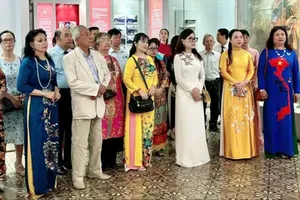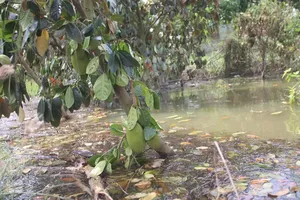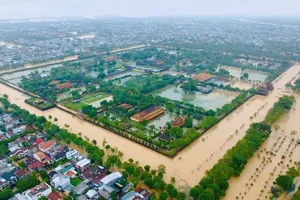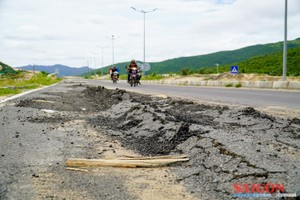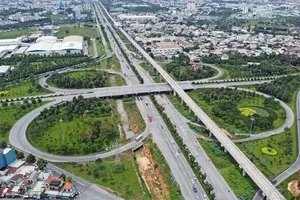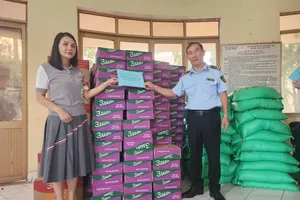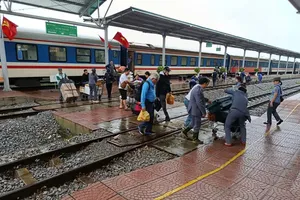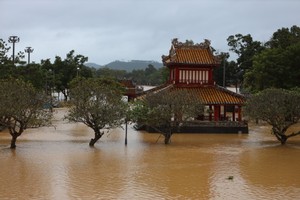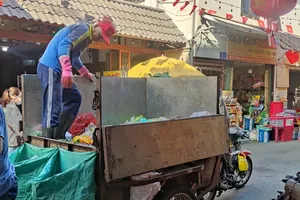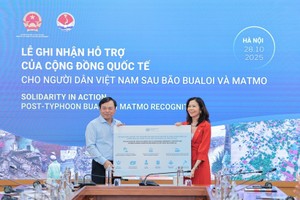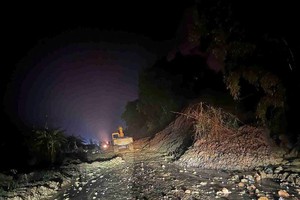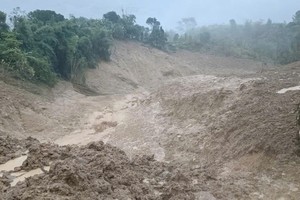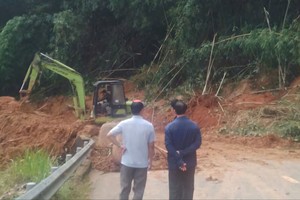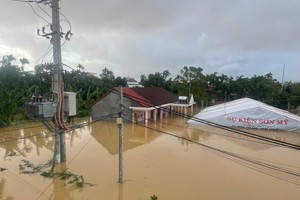Objections from residents in the communes of My Giang and Ninh Yen in the central province of Khanh Hoa are mounting over what they say is the surreptitious use of toxic copper slag by the Hyundai Vinashin Shipyard Co. (HVS).
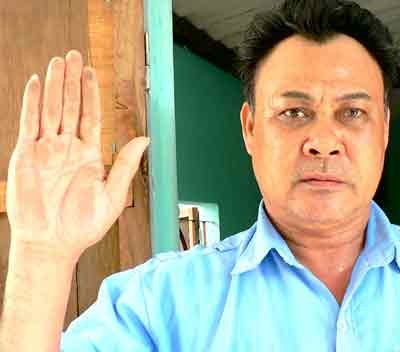
Locals say the shipbuilding company has ordered workers to repair vessels at night using the toxic substance, known as nix grain, despite orders from the Ministry of Natural Resources and Environment (MoNRE) to stop.
The environmental pollution caused from the nix worries the residents, who say they fear for their health and that of their children.
Ms. Trinh Thi Thu, 31, who lives in a residential quarter to the southwest of HVS in My Giang Commune, said evidence nix grain use was everywhere. She said a thick cover of dark nix dust could be seen on the surface and bottom of her washbasin.
Resident Dinh Van Tien, 60, meanwhile, showed reporters how a layer of nix dust could be seen on his hand after wiping it over a surface in his living room.
Locals are especially concerned about the health of their children from exposure to the dust, which experts say can cause cancer over a long period. In 2009, the two communes reported five people died of cancer while local nurse Nguyen Van Son affirmed many more suffered chronic respiratory sickness including bronchitis, sinusitis and pneumonia.
Initial concern was voiced by locals when the Atlantic Star vessel from South Korea arrived at HVS on December 28 to offload 20,000 tons of copper slag as permitted by the provincial government.
Residents say a team from HVS then visited commune households asking people not to complain about the shipment and not say anything negative about the company. They also claim they were asked to sign a document stating that no family members suffered from respiratory disease, and allege that local administrators helped HVS persuade residents not to reveal the information to the press.
Recently, resident Le Loc claimed that January 5 a member of HVS told him the dust in his house was simply incense residues. He said he flew into a fit of rage at the suggestion.
Vice Chairman of Khanh Hoa Nguyen Chien Thang said the province would send a detailed report about the import of nix grain to the government and MoNRE. In addition, the province will hold the 20,000 tons of nix in a warehouse until the Vietnam-Korea joint venture comes up with a solution to treat an initial 800,000 tons of nix it had earlier produced itself. Only then would it be allowed to use the imported slag, Mr. Thang said.
He skirted the issue, however, of who would be in charge of the imported-nix warehouse and whether HVS would be punished for using the slag without permission.
The government has extended the timeline for treating the waste nix to the end of 2010, while a treatment plant invested in by the Hanoi Mineral Metallurgy Joint-Stock Company in Ninh Hoa District will not begin operations until next year.
It will take at least three years to treat the earlier produced 800,000 tons of toxic waste and local residents will thus be forced to live with the pollution for years to come.
Related articles:
Locals accuse HVS of continued nightly toxin use
Residents worry over HVS dumping of toxic slag
